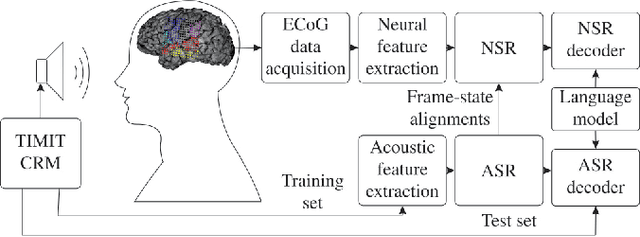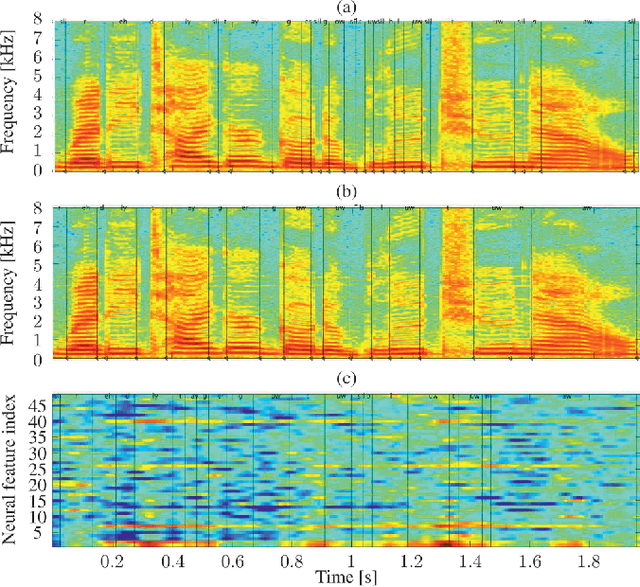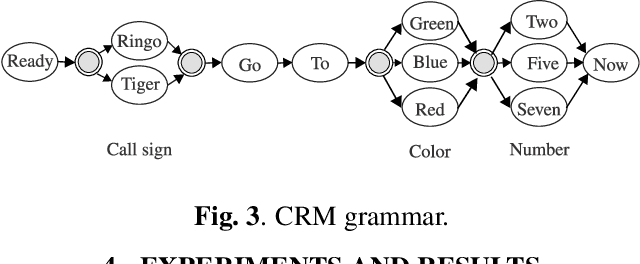David A. Moses
On Neural Phone Recognition of Mixed-Source ECoG Signals
Dec 12, 2019



Abstract:The emerging field of neural speech recognition (NSR) using electrocorticography has recently attracted remarkable research interest for studying how human brains recognize speech in quiet and noisy surroundings. In this study, we demonstrate the utility of NSR systems to objectively prove the ability of human beings to attend to a single speech source while suppressing the interfering signals in a simulated cocktail party scenario. The experimental results show that the relative degradation of the NSR system performance when tested in a mixed-source scenario is significantly lower than that of automatic speech recognition (ASR). In this paper, we have significantly enhanced the performance of our recently published framework by using manual alignments for initialization instead of the flat start technique. We have also improved the NSR system performance by accounting for the possible transcription mismatch between the acoustic and neural signals.
Modeling neural dynamics during speech production using a state space variational autoencoder
Jan 13, 2019



Abstract:Characterizing the neural encoding of behavior remains a challenging task in many research areas due in part to complex and noisy spatiotemporal dynamics of evoked brain activity. An important aspect of modeling these neural encodings involves separation of robust, behaviorally relevant signals from background activity, which often contains signals from irrelevant brain processes and decaying information from previous behavioral events. To achieve this separation, we develop a two-branch State Space Variational AutoEncoder (SSVAE) model to individually describe the instantaneous evoked foreground signals and the context-dependent background signals. We modeled the spontaneous speech-evoked brain dynamics using smoothed Gaussian mixture models. By applying the proposed SSVAE model to track ECoG dynamics in one participant over multiple hours, we find that the model can predict speech-related dynamics more accurately than other latent factor inference algorithms. Our results demonstrate that separately modeling the instantaneous speech-evoked and slow context-dependent brain dynamics can enhance tracking performance, which has important implications for the development of advanced neural encoding and decoding models in various neuroscience sub-disciplines.
 Add to Chrome
Add to Chrome Add to Firefox
Add to Firefox Add to Edge
Add to Edge